If you love making stamped cards or you fancy giving it a go, ink is an essential item in your toolbox. But not all inks are the same – so it is a good idea to familiarise yourself with the different types, as achieving a professional finish often depends on using the right type of ink for the job. If you're new to cardmaking, you can check out our handy glossary of terms, here.
Stamping is a hugely varied technique. Firstly, there are many different surfaces you can stamp on, from card to acetate, vellum and fabric, and then there are fun variations like heat embossing. You can also use inks without stamps; as a colouring medium to add colour to the edges of card panels, for example.
As a result, different ink types have been created to help you get the best effect with each technique. Each ink type and its properties is described opposite but don’t be afraid to experiment either! The more you practise, the more you’ll discover which mediums you like best. So take out your scrap paper and start stamping today.
Types of ink:
Dye-based ink

Dye-based ink is quick-drying and excellent for basic stamping. It’s sold on a hard felt pad, which means it’s difficult to over-ink your stamp, so it gives clean, crisp images – perfect for stamping outlines and ideal for those new to stamping.
However, it’s useful to note that dye-based ink soaks into the fibres of the paper rather than sitting on top, so you will get the brightest effect if you use them on pale or white card, rather than dark coloured card where the colour will blend in. Some dye-based inks are waterproof when dry, some are not. If you want to watercolour over your stamped images, you’ll need to use an ink labelled as ‘waterproof’ or ‘permanent’. Alternatively, non-waterproof inks can be used as a colouring medium themselves – simply dab some ink onto a tile, or similar surface, and apply the colour with a paintbrush.
Also worth noting is that dye-based ink tends to fade over time. To avoid this, look for ink pads labelled as ‘archival’ or ‘fade-resistant’.
Pigment ink
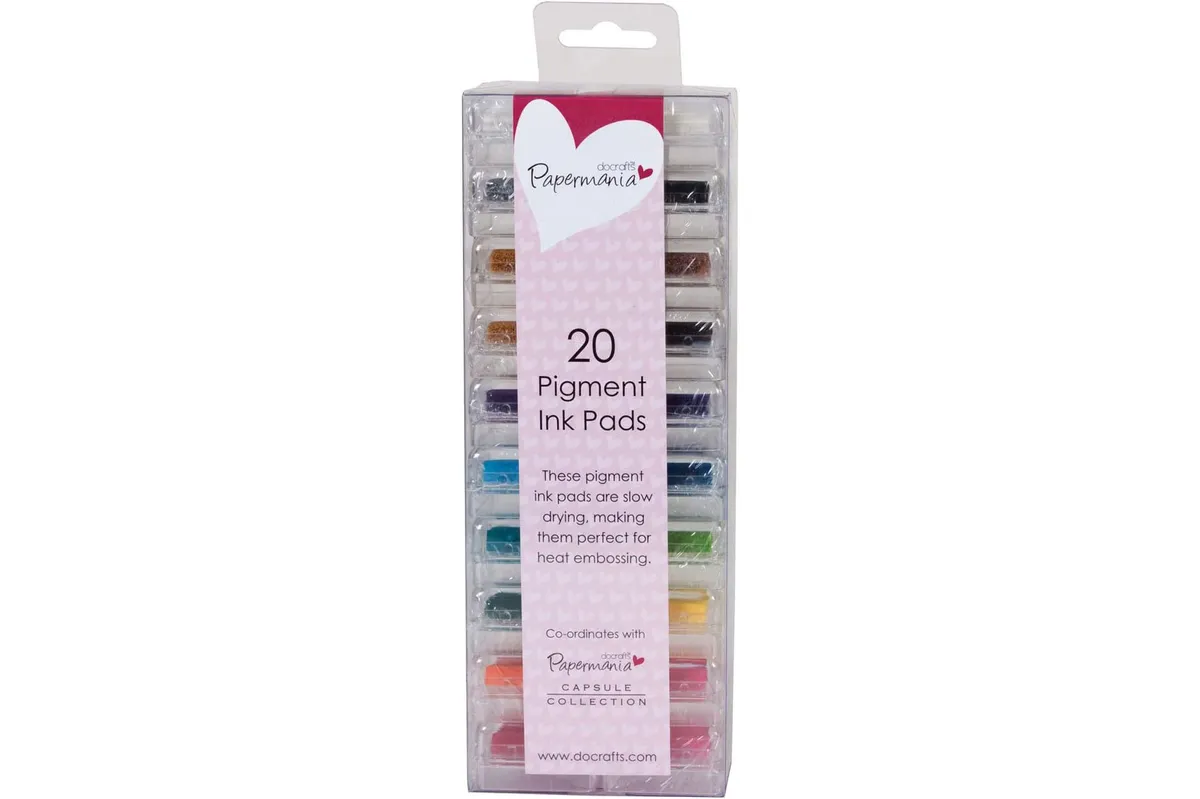
Pigment inks are slow-drying and ideal for heat embossing, as they allow enough time for the embossing powder to stick to the inked area.
Unlike dye-based ink, pigment ink dries on the surface of the card rather than soaking into the fibres, so the colours often look more vibrant than dye-based inks. However, this means that they are not suitable for basic stamping on coated or glossy card as the ink won’t dry. Only use them to stamp on these surfaces if you heat emboss them afterwards.
Pigment inks are generally sold on a spongy pad so beware of over-inking your stamps with them. There are also lots of exciting variations of pigment inks available, such as shimmery and chalk finishes, which are fantastic for stamping colour on your cards.
Solvent-based inks
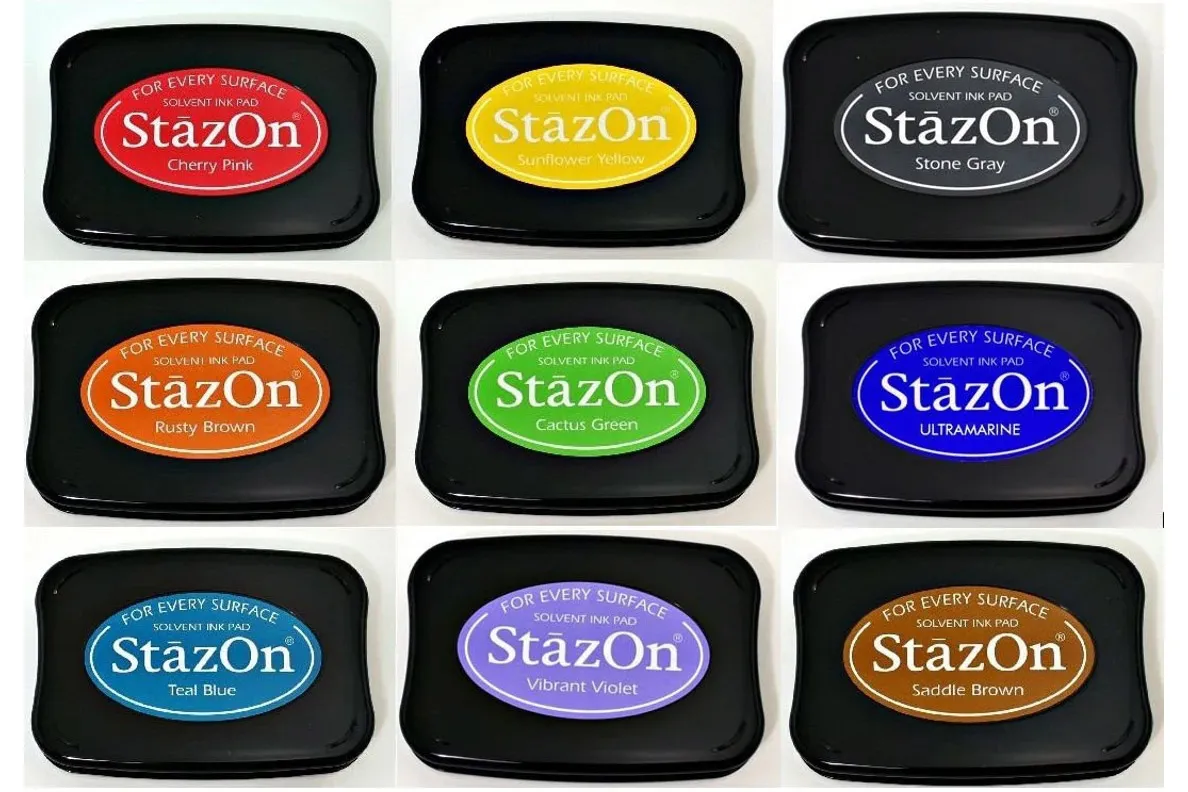
Solvent-based inks are quick-drying, permanent inks. As they can be used on any surface they are ideal for stamping on all kinds of card, acetate, glass and even metal. Some manufacturers of clear stamps advise against using solvent-based ink with their products, as the solvent can attack the clear polymer over a period of time.
StazOn is a popular brand of solvent-based ink, as it has a mild smell and is available in many colours.
- Buy now from eBay (£6.99), Etsy UK (£7.99)
VersaMark ink
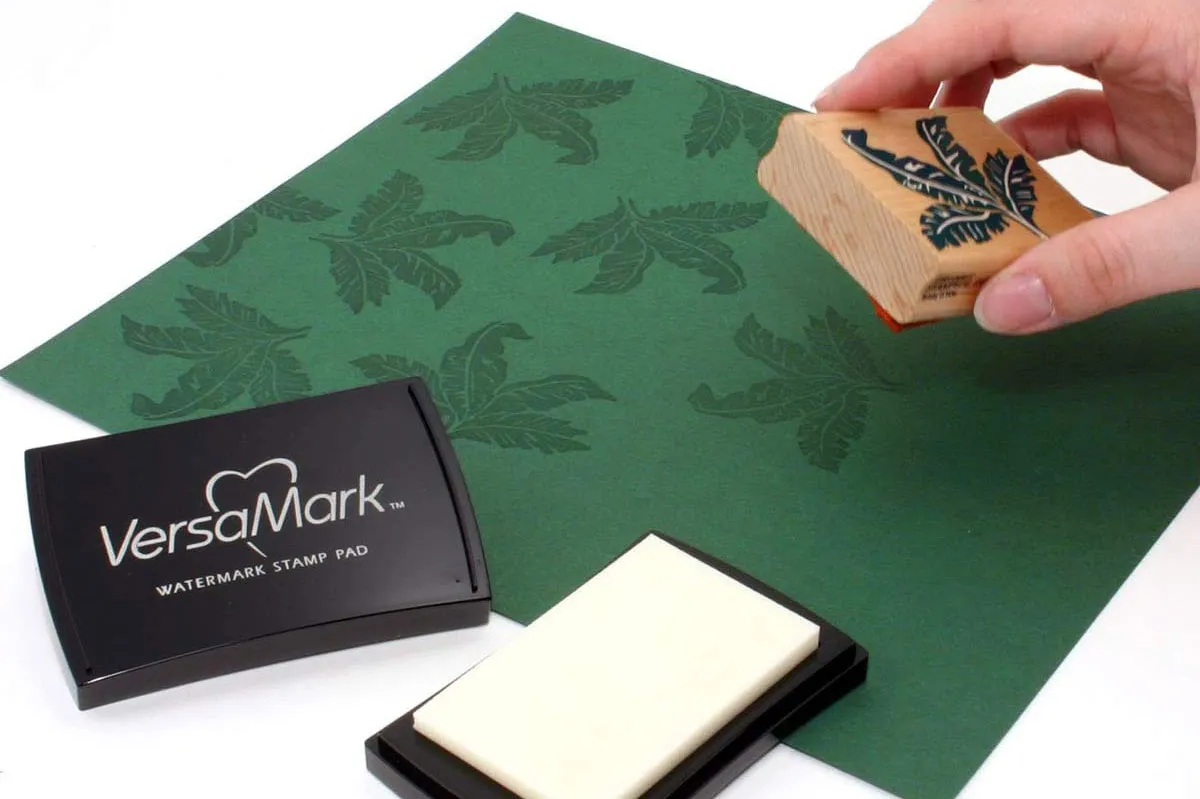
VersaMark ink is a very sticky, clear pigment ink. It’s ideal for heat embossing and other effects because embossing powder will stick to it and as it is clear you can add any colour of powder to it.
You can heat emboss sentiments or patterns onto patterned papers to create your own unique background panels. These patterned papers, which are free to download, would look great with a heat-embossed sentiment or two!
Free watercolour floral patterned papers
Chalk ink
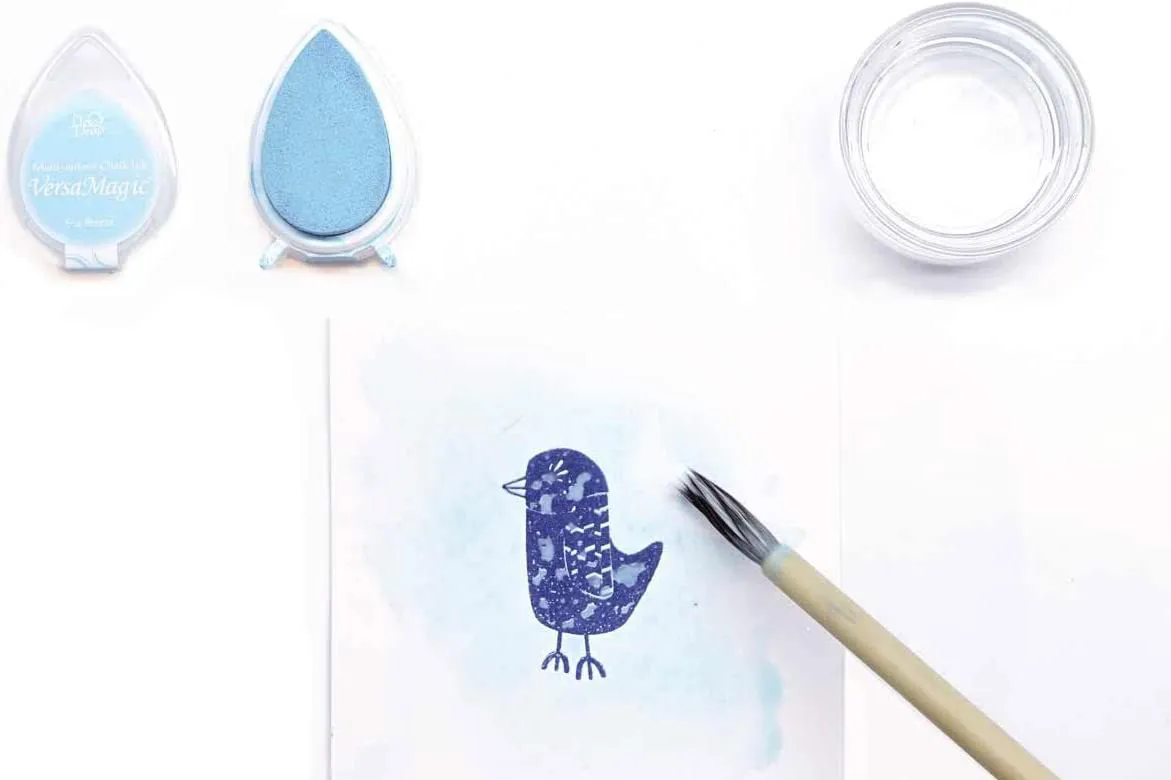
Chalk inks are a pigment ink which have a powdery, matte finish once dry. They have the vibrance of a pigment ink but can be blended like a dye-based ink, making them a popular choice with cardmakers.
Distress Ink

These are dye-based inks with a higher concentration of colour and a longer drying time than normal. They are designed to flow when sprayed with water, and to be blended and worked into your project. They are ideal for altered art and distressed effects.
Alcohol inks
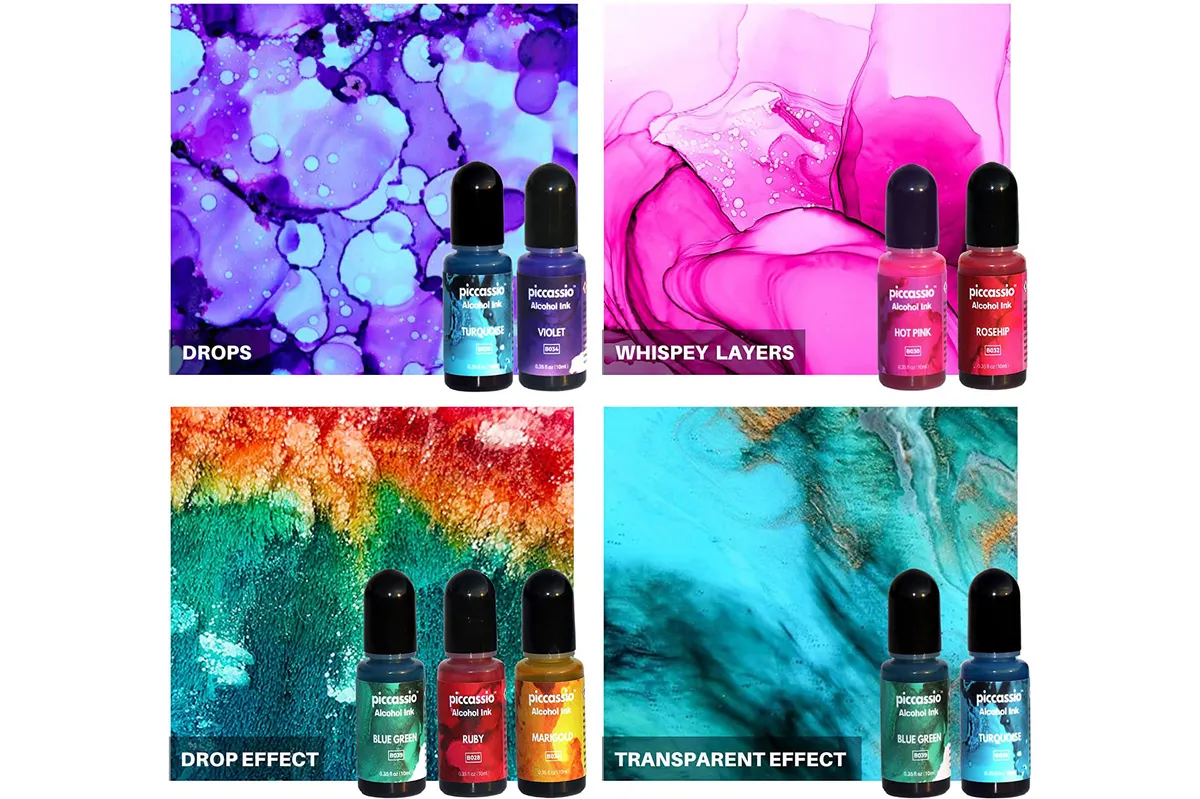
These are special dye-based inks designed to give a pretty, polished-stone effect. They are quick-drying and permanent, and can be used on lots of surfaces including glossy paper, acetate, shrink plastic, foil and metal.
Hints and tips for perfect results
- Always store your ink pads upside down, so the ink falls to the top of the felt pad. This will ensure your ink pad stays juicy when it’s needed.
- Make sure your stamp is clean before you ink it up, so your ink pads don't become tainted with other colours.
- To avoid over-inking your stamps, always take the ink pad to the stamp, tapping it gently onto the surface (instead of pressing the stamp down into the ink pad). This will help you achieve an even coverage of ink and a clean, stamped image.
